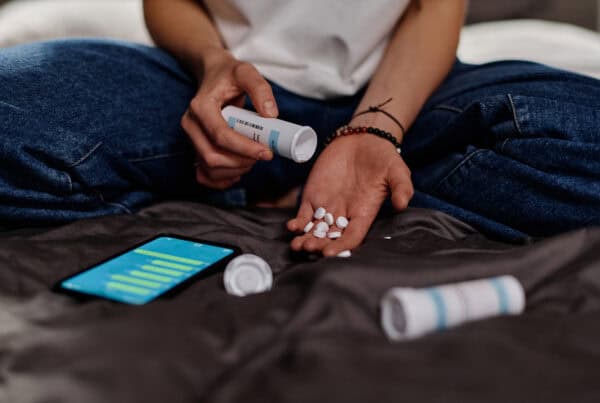Rainbow fentanyl is a term that has gained significant attention in recent years due to the alarming rise in synthetic opioid abuse. This variant of fentanyl is known for its colorful appearance, often resembling candy, which makes it particularly dangerous. At Lighthouse Recovery, located in Dallas, Texas, we understand the critical need to educate the public about this harmful substance and provide effective treatment options for those affected by opioid addiction.
Understanding Fentanyl and Its Potency
Fentanyl is a synthetic opioid that is approximately 50 to 100 times more potent than morphine and about 50 times more potent than heroin. Initially developed for pain management in cancer patients, fentanyl is now a leading cause of overdose deaths in the United States. The drug can be found in various forms, including powders, patches, and pills. Its high potency means that even a tiny amount can be lethal, making it a significant concern for public health.
What is Rainbow Fentanyl?
Rainbow fentanyl refers to fentanyl pills or powder that has been dyed in various bright colors. These colors range from pink, blue, and green to yellow, purple, and orange. The colorful appearance is intended to make the drug more appealing, particularly to younger individuals. Unfortunately, this tactic has proven effective, leading to increased instances of accidental overdoses and fatalities.
Why is it Called Rainbow Fentanyl?
The name “rainbow fentanyl” stems from its multicolored appearance. Drug manufacturers use food coloring or dyes to create these vibrant hues, making the drug resemble candy. This deceptive tactic is particularly concerning as it increases the risk of unintentional ingestion, especially among children and teenagers who might mistake it for harmless candy.
The Dangers of Rainbow Fentanyl
The primary danger of rainbow fentanyl lies in its potent nature. Even a minuscule amount can cause an overdose. Additionally, its colorful appearance increases the risk of accidental ingestion. Here are some critical dangers associated with rainbow fentanyl:
- High Potency: Due to its extreme potency, fentanyl can lead to rapid respiratory depression and death.
- Deceptive Appearance: The candy-like appearance of rainbow fentanyl can lead to accidental ingestion by children and teenagers.
- Contamination: Fentanyl is often mixed with other substances, increasing the risk of overdose as users may be unaware of its presence.
- Widespread Availability: Fentanyl is increasingly found in counterfeit pills and street drugs, making it more accessible to users.
How Fentanyl Enters the Market
Fentanyl is often illicitly manufactured in clandestine labs, primarily overseas, and then smuggled into the United States. It can be sold as a powder, dropped onto blotter paper, put in eye droppers and nasal sprays, or made into pills that look like other prescription opioids. This widespread distribution method contributes to its availability and the rising number of fentanyl-related overdoses.
Recognizing the Signs and Symptoms of Fentanyl Overdose
Recognizing the signs of a fentanyl overdose can be life-saving. Some common symptoms include:
- Extreme drowsiness or inability to wake up
- Slow, shallow, or stopped breathing
- Limp body
- Cold, clammy skin
- Blue or purple lips and fingernails
- Slow or no heartbeat
If you suspect someone is experiencing an overdose, it is crucial to seek emergency medical help immediately. Administering naloxone (Narcan) can temporarily reverse the effects of a fentanyl overdose, but professional medical assistance is necessary for full recovery.
Treatment Options for Fentanyl Addiction
At Lighthouse Recovery we offer comprehensive treatment programs tailored to individuals struggling with fentanyl addiction. Our approach combines evidence-based therapies with holistic treatments to address the physical, psychological, and emotional aspects of addiction. Here are some of the treatment options we provide:
1. Detoxification
Detox is the first step in the recovery process, helping individuals safely withdraw from fentanyl under medical supervision. Our detox program includes:
- Medical monitoring to ensure safety and manage withdrawal symptoms
- Medication-assisted treatment (MAT) to ease withdrawal symptoms and reduce cravings
- Psychological support to address the mental aspects of detox
2. Inpatient Rehabilitation
Our inpatient rehab program provides a structured and supportive environment for individuals to focus on their recovery. Key components of our inpatient program include:
- Individual therapy sessions to explore personal issues and develop coping strategies
- Group therapy and support groups to build a sense of community and shared experience
- Cognitive Behavioral Therapy (CBT) and Dialectical Behavior Therapy (DBT) to address underlying mental health issues
- Holistic therapies such as yoga, meditation, and art therapy promote overall well-being
3. Outpatient Programs
For those who require flexibility, our outpatient programs offer comprehensive treatment while allowing individuals to maintain their daily responsibilities. Our outpatient options include:
- Intensive Outpatient Program (IOP), which offers structured support while living at home
- Partial Hospitalization Program (PHP) which provides intensive treatment similar to inpatient care but with the flexibility to return home each day
- Regular outpatient therapy sessions for continued support and maintenance of recovery
4. Aftercare and Relapse Prevention
Recovery is an ongoing journey, and we provide robust aftercare programs to support long-term sobriety. Our aftercare services include:
- Continued therapy and counseling to address ongoing challenges
- Support groups and alums programs to maintain a strong support network
- Relapse prevention planning to identify triggers and develop coping strategies
Why Choose Lighthouse Recovery?
Lighthouse Recovery is committed to providing high-quality, compassionate care for individuals struggling with fentanyl addiction. Here are some reasons to choose our facility:
- Experienced Staff: Our team of licensed professionals is dedicated to supporting each individual’s recovery journey.
- Personalized Treatment Plans: We create customized treatment plans that address each client’s unique needs.
- Holistic Approach: We incorporate holistic therapies to promote overall well-being and healing.
- Supportive Environment: Our facility offers a safe, supportive, and nurturing environment conducive to recovery.
Raising Awareness and Preventing Fentanyl Abuse
Education and awareness are crucial in combating the fentanyl epidemic. Here are some steps you can take to raise awareness and prevent fentanyl abuse in your community:
1. Educate Yourself and Others
Learn about the dangers of fentanyl and share this information with friends, family, and community members. Understanding the risks can help prevent accidental overdoses and encourage individuals to seek help.
2. Secure Medications
If you have prescription opioids at home, ensure they are stored securely and out of reach of children and teenagers. Properly dispose of unused medications to prevent misuse.
3. Support Prevention Programs
Get involved with local prevention programs and initiatives to reduce drug abuse. Supporting community efforts can make a significant impact in curbing the fentanyl crisis.
4. Advocate for Treatment Access
Advocate for increased access to addiction treatment and mental health services. Ensuring that individuals have access to the care they need can reduce the prevalence of drug abuse and related deaths.
Community Involvement and Resources
At Lighthouse, we believe that community involvement is essential in the fight against fentanyl abuse. We encourage our community to participate in local events, support groups, and educational programs to raise awareness and prevent drug misuse.
1. Local Support Groups
Engaging with local support groups can provide a strong network of individuals who understand the challenges of addiction. These groups offer a safe space to share experiences, gain support, and find encouragement.
2. Educational Workshops
Attending educational workshops on substance abuse and addiction can equip individuals with the knowledge needed to recognize signs of drug misuse and understand the importance of seeking help.
3. Community Events
Participating in community events focused on drug prevention and awareness can help spread important information and resources. These events often include activities, guest speakers, and informational booths that provide valuable insights into combating substance abuse.
Additional Resources
For further information on fentanyl and its effects, you can refer to the following resources:
- Centers for Disease Control and Prevention (CDC): The CDC provides comprehensive information on fentanyl, including statistics and prevention strategies. Visit their website at CDC Fentanyl Information.
- National Institute on Drug Abuse (NIDA): NIDA offers detailed research and publications on fentanyl and other opioids. Access their resources at NIDA Fentanyl Research.
- Substance Abuse and Mental Health Services Administration (SAMHSA): SAMHSA provides resources for treatment and recovery from opioid addiction. Learn more at SAMHSA Opioid Resources.
By staying informed and proactive, we can significantly impact the prevention of fentanyl abuse and the support of those affected by addiction. At Lighthouse, we are here to help every step of the way. Reach out to us today and start your journey to recovery.
Conclusion
Rainbow fentanyl represents a new and dangerous trend in the ongoing opioid crisis. Its colorful appearance makes it particularly hazardous, as it can easily be mistaken for candy. Lighthouse Recovery we are dedicated to providing comprehensive treatment options for individuals struggling with fentanyl addiction. Through education, prevention, and compassionate care, we aim to combat this crisis and support individuals on their path to recovery.
Take the first step towards recovery today. Contact Lighthouse Recovery for more information about our treatment programs. Together, we can overcome fentanyl addiction and build a healthier, drug-free future.





